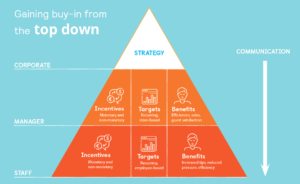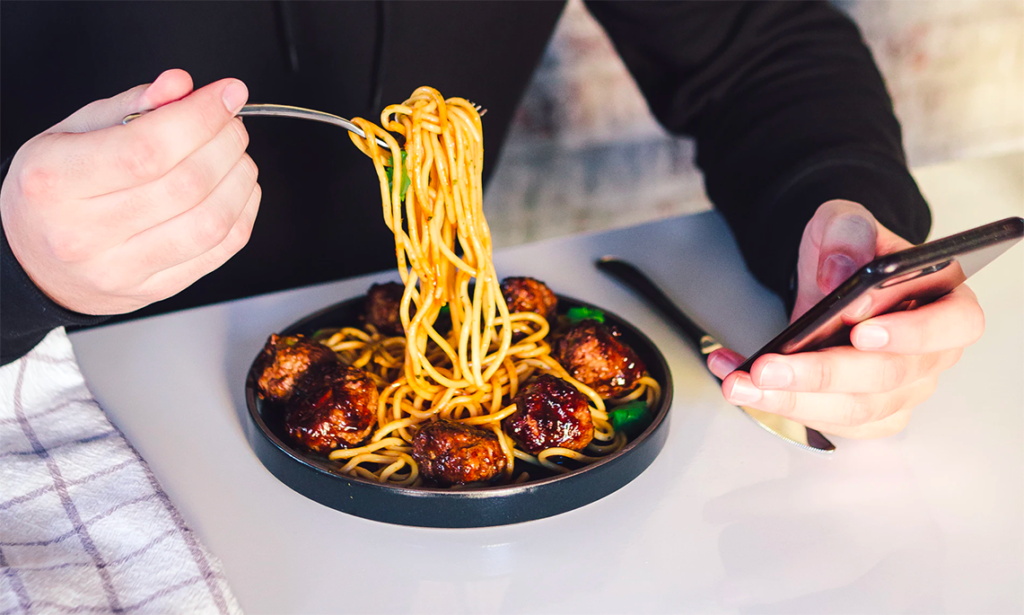[vc_row][vc_column][vc_column_text]In our last post, we got to number 8 out of 12 things every restaurant operator needs to think about when preparing for a Pay at Table implementation. This week, we cover off the rest. From how guests discover your pay at table solution to, critically, getting staff buy-in, here’s what you need to consider to make sure your implementation is a success:
9) Discovery
Guests will discover the pay at table solution through printed materials and messaging on each table. How you choose to display this can vary, from a table sticker to a table talker, to a clip-on sign on the condiments tray. While a table sticker may lend itself well to venues where the tables are permanently fixed, a clip-on may be preferable where there are community tables or large menus or mats on the surface that are a firm part of your brand’s guest experience.
Ensure staff understand how guests will launch pay at table, whether it’s through scanning a QR-code, tapping their phone against an NFC symbol, or clicking a prompt at the point of WiFi login.
How the guest chooses to launch the app will often depend on their smartphone and personal preference. An Android user may prefer to tap the NFC symbol to start the journey, while an iOS user might opt to point their camera at the QR-code to access it. Make sure your staff are fully educated on what a QR code and NFC tag is, and understand how to use them to activate the solution. You may want to use an Android and iOS smartphone during your initial staff training workshop, so each front of house team-member is able to try launching the solution using the two different systems.
10) Signage explainer
Provide clear guidance on the signage or stickers you’re placing throughout the store that allows guests to check-in to their table. Inform staff of what the signage/stickers will be used for, how they will be used and where they should be placed. For example, you might want to give highly detailed instructions such as:
‘Stickers should be affixed uniformly in the centre, towards the aisle side of the table (where the server stands). Do not fix stickers to booths, the bar table or bar stools.’
11) Staff scripts
Think about incorporating pay at table into staff’s daily scripts. The solution is flexible enough to be introduced at any point during the customer journey. For example, at the point of greeting, order or table touch. Here are some examples scripts your servers could use to maximize uptake of pay at table:
Greeting – Hi there I’m Julie, I’ll be your sever today. Just to let you know you don’t have to wait for me to pay tonight…
Order – Thanks for your order guys, I’ll get that sent to the kitchen. Just to let you know, when it comes to payment, you can do this yourself whenever you like, just tap/scan here…
Table touch – I hope to catch you again but if you need to leave in a rush feel free to view and clear your check at your pay at table point… it only takes a minute and is a lot quicker than waiting for a card reader.
12) Driving staff buy-in
Your staff are your biggest asset for onsite marketing and have a significant influence over whether your guests use pay at table. It’s essential your front-of-house teams are properly trained to be able to walk your customers through the pay at table journey as well as field any questions or troubleshoot any issues they might have.
By using staff to reinforce the use of pay at table, guests will start to appreciate its benefits such as taking control of the pace of their dining experience.
Initially, staff might be sceptical about the reasons behind deploying any new technology – especially self-service. Some ideas to help get them onboard include:

Your digital strategy should look to communicate to employees at every level and across functions as to how pay at table will benefit them.
To motivate staff, you might consider: incentives (monetary or non-monetary), setting targets (at store or employee level) and educating staff on the benefits the technology will bring them through training programs, Other examples of how you might motivate your staff include:
Manager incentive: Consider an award for the store manager whose location averages an employee of the week top score, within a two week period of the initial employee reaching it.
Staff incentive: Implement a special employee of the week cash reward scheme for those driving the most guests to use the solution, or for the employee that proved most helpful when fielding guests’ questions
It is important to remember that staff buy-in doesn’t start and stop pre-launch. Continual communication with employees, making them feel part of the initiative, cementing the reasons why mobile at table improves their lives and offers them benefits, needs to happen throughout and well after deployment.
That rounds-off the 12 things brands need to think about when preparing for a mobile pay at table roll-out. Ultimately, the more prepared you are and the more thought that’s put into, not just the customer journey, but bringing staff along for the ride too, the more successful the solution will be. Curious about what during- and post-launch initiatives you could be engaging into drive pay at table success? Stay tuned, we’ll be covering that soon![/vc_column_text][vc_btn title=”Learn more about Pay at Table” color=”peacoc” link=”url:https%3A%2F%2Fwww.qikserve.com%2Fplatform%2Fpay-at-table%2F||target:%20_blank|”][vc_video link=”https://vimeo.com/348670916″][/vc_column][/vc_row]


